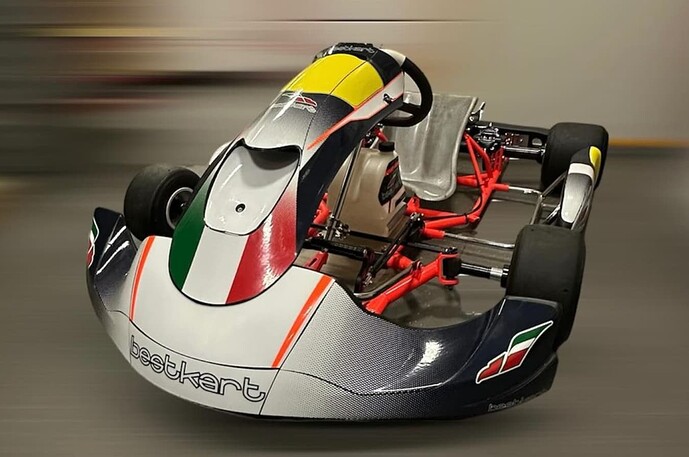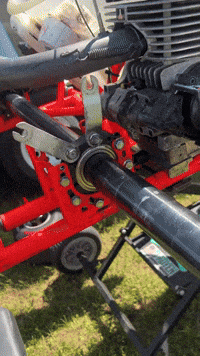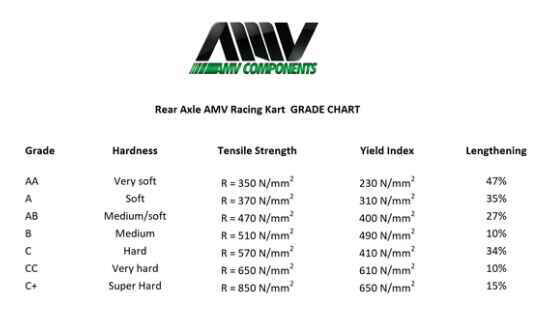UPDATED with tuning guide at the bottom of this post!
As many of you have seen, last season I was fortunate enough to get an offer to participate in the SKUSA SuperNats with factory support from BestKart. The goal was to take the first steps to introduce this chassis brand to the American market. While our results at that event were not what we were hoping for, we did a lot of good work and learned a lot about the kart in just a few short days. At the end of the week we discussed further collaborations with the BestKart factory. So this season I am again lucky to be offered the opportunity to continue that relationship and race with BestKart factory support with the help of @Paul_Montopoli and Prodigy Motorsports at the Stars Championship Series and other select events, as well as plenty of testing. Part of my duties as a development driver are to share my insights and thoughts on the chassis itself, what all the different setup changes do, and highlight the progression we go through as we continue to develop the kart for the American market, which is what I’m going to be doing in this blog. We want potential customers to have a good idea of how the chassis works and what kind of setup changes we are making to get it dialed into each track and condition. I often bemoan the “secret setup” changes that other teams or chassis keep hidden, so we want to make sure that anyone who is interested in driving a BestKart will have all the knowledge and tools they need to make it work in any condition.
I already outlined some of the changes we made to the kart when we had it in Vegas, which you can read about here: SKUSA SuperNationals 26 - TJ Driver Diary
Yesterday I was able to get the BestKart F03 out to Dousman for the first time and flog it for a couple sessions on my home turf, which gave me a really good comparison to past chassis I’ve driven now that I was on familiar ground. The BestKart F03 is a 30/32mm chassis with a design based on the successful Kart Republic KR2. It is made 100% in BestKart’s factory, using components made in-house as well as AMV components and wheels you find on other karts. The kart functions very similar to the KR. It runs without a front bar for the most part, and the rest of the frame is fairly flexible. The kart I currently am testing is the same kart Paul drove in a few club races and at CKNA and Stars Charlotte. BestKart considers this their “medium-stiff” frame, though it does still feel like it’s on the softer side compared to other chassis.
For yesterday’s session, I had AMV 3F wheels and used MG Red SH2 tires. Track was pretty slick and dusty and temps were in the low 70s with low humidity. I only had time for a couple sessions as I was coaching the rest of the day. The setup on the kart had already been tweaked on by Paul at his previous events, so I started where he had it just to get a feel for everything and shake it down. Basically the setup was a bit wider on front track, no front bar, max caster, low front ride height, high rear ride height, 1390mm rear track, C+ (stiff) axle. My first session was a 12 lap session and my best lap was 39.6. There was more time in it, but I’m rusty and was a little sloppy in my driving. Still, this lap was fast among the other KA Seniors there on that day. I hadn’t sat in a kart since November. The kart balance was really good; I was impressed. Super neutral, no real over or understeer in fast or slow corners, and it felt like the kart released off the corner really well. Sometimes when the kart feels that neutral/well balanced, it isn’t fast as it typically means the inside rear isn’t unloading enough. Coming from OTK that’s certainly the case. The OTK really needs a high initial hike of the inside rear to carry it through the corner. Initially the BestKart feels like it loads up more progressively and is able to flex enough to keep the inside rear unloaded without as much input/mechanical jacking on entry. It was reassuring that the direction we were tuning in Vegas before we totaled the kart, was seemingly the right direction, as the setup I ran yesterday was basically where I was headed on setup in Vegas before the wreck.
Unfortunately my day was cut slightly short due to an issue with the brakes. There was air in the system somewhere. I tried to bleed them but it made no difference, and the pedal was getting soft halfway through the run, so it may have a nicked seal or something. I need to inspect further.
Other than that, I was happy with the first outing on a proper circuit. It was hard to get a good judgement on the kart in Vegas since it was an unfamiliar circuit and a different surface than we are used to. But on a real race track, the kart felt very strong.
I am hoping to test all the axles next time I go out and report back. Not a ton of info right off the bat here, but I wanted to at least get the blog started and post my experience since I had a few friends ask how the kart was. More to come!
For more information on the BestKart, feel free to comment, PM or email myself or @Paul_Montopoli and we’d be happy to answer for you.
BestKart Factory Tuning Guide (per our testing, subject to change as more data is gathered)
Axles
A (soft) - will free the rear up in tight corners, reduces side-bite in fast corners
B (medium) - standard axle
C (hard) - reduces rate of lift, stabilizes rear by providing side-bite in fast corners
C+ (extra hard) - further flattens the rear of the kart for traction
Front Spindle Stubs
C (hard) - stiffens front end, allow for 15mm extra front track width, increases front feel and turn-in
Rear Ride Height
Low - reduces weight transfer, increases rear traction on corner exit
Medium - standard
High - increases weight transfer, increases side-bite and initial rate of lift
Front Ride Height
Low - reduces weight transfer, reduces turn-in
High - increases weight transfer, adds weight to steering
Front Torsion Bar
In - slightly helps front grip on turn-in when track conditions are slick
Out - standard
Steering Rate
Middle Hole - standard, slower steering rate and steering weight, increases understeer
Bottom Hole - fast steering rate, high steering weight, increases front responsiveness (this is my current baseline, we found the middle hole to be way too soft and slow in the front end)
Caster
Negative - reduces weight-jacking, lightens steering feel
Neutral - standard
Positive - increases weight-jacking, increases front responsiveness (our baseline is currently half-caster)
Camber
Negative - reduces steering sensitivity, increases front tire temperature, kart releases better from apex to exit, helps reduce front scrub in fast corners
Positive - increases steering weight, widens tire contact patch for cooler front tire temperatures, helps front turn-in for tighter corners, increases front scrub in fast corners




